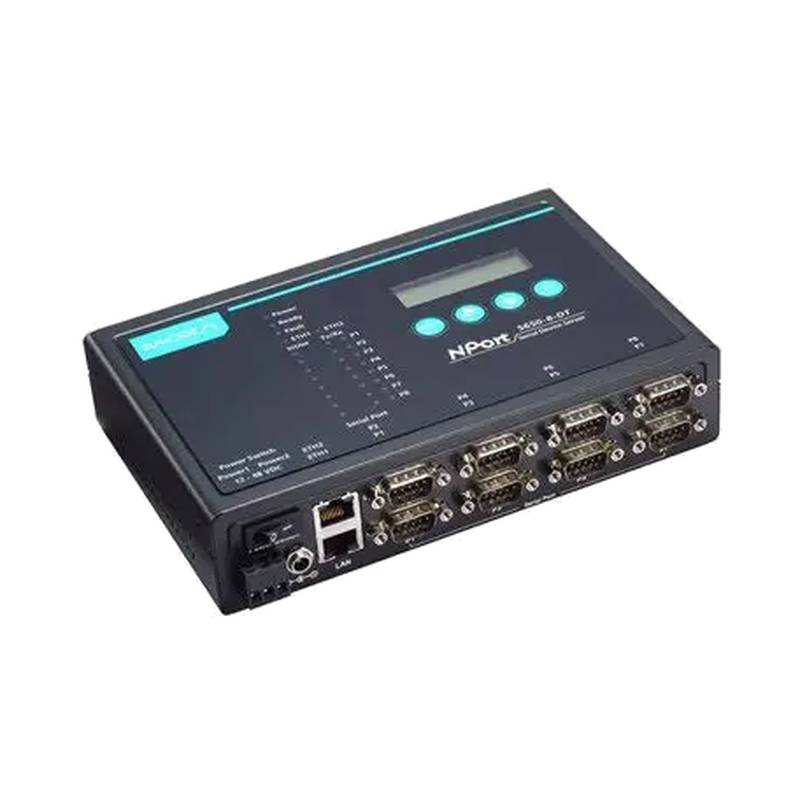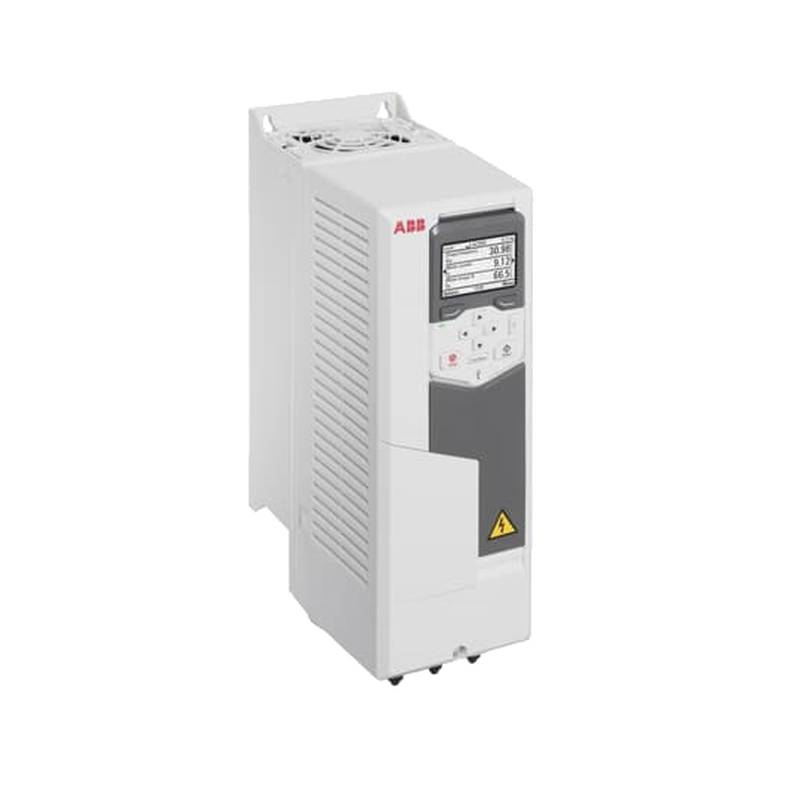
The Siemens 5SY6132-8CC is a single-pole, 32A miniature circuit breaker (MCB) designed for robust industrial power protection. Its core advantages lie in its high breaking capacity, reliable tripping characteristics, and compact design, ensuring safety and operational continuity in demanding electrical systems. This MCB is engineered to safeguard circuits against overcurrents and short circuits, preventing damage to equipment and mitigating fire hazards. The 5SY6 series offers excellent performance, making it a preferred choice for industrial automation, control panels, and building installations where dependable protection is paramount.
Siemens 5SY6132-8CC: Comprehensive Product Specifications
| Feature | Specification |
| :--------------------------- | :--------------------------------------------- |
| Product Type | Miniature Circuit Breaker (MCB) |
| Manufacturer | Siemens |
| Series | 5SY6 |
| Pole Configuration | 1-Pole (Single Pole) |
| Rated Current (In) | 32A |
| Rated Voltage (Un) | 230/400V AC |
| Tripping Characteristic | C Curve (for inductive loads) |
| Breaking Capacity (Icn) | 6kA (6000A) at 400V AC |
| Frequency | 50/60 Hz |
| Insulation Voltage (Ui) | 500V AC |
| Impulse Withstand Voltage (Uimp) | 4kV |
| Overvoltage Category | III |
| Ambient Temperature Range | -25°C to +45°C |
| Degree of Protection | IP20 (handle), IP40 (enclosure) |
| Terminal Type | Screw Terminal |
| Mounting Type | DIN Rail (35mm) |
| Standards Compliance | IEC/EN 60898-1, IEC/EN 60947-2 |
| Service Life (Electrical) | 10,000 switching cycles |
| Service Life (Mechanical) | 20,000 switching cycles |
| Weight | Approximately 100g |
Core Features & Market Positioning
The Siemens 5SY6132-8CC stands out in the industrial circuit protection market due to its robust construction and adherence to stringent international standards, including IEC/EN 60898-1 and IEC/EN 60947-2. Its "C" curve tripping characteristic is specifically optimized for inductive loads commonly found in industrial settings, such as motors and transformers, providing a balance between sensitivity to faults and immunity to nuisance tripping during inrush currents. The high breaking capacity of 6kA at 400V AC ensures that the breaker can safely interrupt even severe short-circuit faults, safeguarding downstream equipment and personnel. Siemens' reputation for quality and reliability further solidifies the 5SY6 series' position as a dependable solution for critical power distribution applications.
Key Application Scenarios
This Siemens 5SY6132-8CC industrial power circuit breaker is ideally suited for a wide array of applications within industrial environments. It is commonly deployed in control cabinets and distribution boards for protecting individual circuits that power machinery, pumps, fans, and HVAC systems. Its 32A rating and C-curve make it particularly effective for circuits with moderate inrush currents, typical of motor-driven equipment. Furthermore, it finds application in building automation systems, lighting circuits in commercial facilities, and as a component in custom-built electrical panels for manufacturing processes. The 1-pole configuration is ideal for single-phase loads or for use in multi-pole assemblies where individual circuit isolation is required.
Practical System Integration Guidance
Integrating the Siemens 5SY6132-8CC into an existing electrical system is straightforward, owing to its standard 35mm DIN rail mounting. Ensure the power source is de-energized before commencing installation. Connect the line conductor to the upper terminal and the load conductor to the lower terminal, observing proper wire stripping length and secure screw tightening to prevent loose connections, which can lead to overheating. For single-phase applications, connect the line and neutral conductors through separate MCBs or a combined RCD/MCB unit for comprehensive protection. The breaker's compact design facilitates installation even in space-constrained enclosures. Always adhere to local electrical codes and standards during installation.
Operation and Risk Mitigation
Operating the Siemens 5SY6132-8CC involves standard breaker functionality: a toggle lever is used to manually switch the circuit ON (up position) and OFF (down position). In the event of an overcurrent or short circuit, the breaker will automatically trip, moving the lever to the OFF position, visually indicating a fault. To reset the breaker, ensure the fault condition has been cleared, then firmly push the lever to the ON position. Never force the lever if it is stuck or if the circuit is still experiencing a fault. Common troubleshooting involves identifying the cause of the trip, such as overloaded circuits, shorted wiring, or faulty equipment. Risk mitigation is primarily achieved through the breaker's inherent protective function; regular visual inspection and ensuring proper installation prevent potential hazards.
Scalability & Long-Term Value
The Siemens 5SY6132-8CC offers excellent long-term value through its compatibility with the broader Siemens industrial control and automation ecosystem. While this specific unit is a single-pole breaker, it can be easily integrated into multi-pole configurations by installing adjacent single-pole breakers, allowing for scalable protection as system requirements evolve. Its robust design and high mechanical and electrical service life ensure sustained performance over many years. Furthermore, the 5SY series is designed to integrate seamlessly with other Siemens protection devices and control components, supporting future upgrades or expansions of electrical infrastructure, including potential integration into digital monitoring systems if paired with appropriate accessories.
Frequently Asked Questions (FAQs)
Q1: What is the primary function of the Siemens 5SY6132-8CC?
The Siemens 5SY6132-8CC is an industrial miniature circuit breaker. Its main job is to protect electrical circuits from damage caused by overcurrents or short circuits. It acts as an automatic safety switch.
This device interrupts the flow of electricity when it detects an abnormal current. This prevents overheating of wires and protects connected equipment from damage. It ensures the overall safety and reliability of electrical installations.
By tripping during fault conditions, it significantly reduces the risk of electrical fires and equipment failure. This makes it a crucial component for industrial safety standards.
Q2: What does "1P 32A" mean in the product name?
"1P" stands for single-pole. This means the circuit breaker is designed to interrupt only one conductor. It's typically used for single-phase circuits or for applications where only one hot wire needs protection.
"32A" refers to the rated current of the breaker. This is the maximum continuous current that the breaker can carry without tripping under normal operating conditions. Exceeding this current for a sustained period will cause it to trip.
In summary, a 1P 32A breaker is a single-pole device rated to handle up to 32 amperes continuously and protect that single conductor from overcurrents.
Q3: What type of loads is the Siemens 5SY6132-8CC suitable for?
The 5SY6132-8CC features a "C" curve tripping characteristic. This makes it highly suitable for inductive loads that have a moderate inrush current when starting up.
Examples include motors, transformers, and fluorescent lighting ballasts. The C-curve allows for higher currents for short durations without tripping, accommodating these inrush events.
It is generally not recommended for highly inductive loads with very high inrush currents, such as large motors, where a D-curve breaker might be more appropriate.
Q4: What is the breaking capacity of this circuit breaker?
The breaking capacity, denoted as Icn, for the Siemens 5SY6132-8CC is 6kA (6000 Amperes). This is the maximum fault current the breaker can safely interrupt at its rated voltage.
A higher breaking capacity means the breaker can handle more severe short-circuit faults without being destroyed. This ensures that the breaker performs its protective function even under extreme conditions.
For industrial applications, a sufficient breaking capacity is essential to ensure safety and prevent cascading failures in the electrical distribution system. The 6kA rating is suitable for many standard industrial installations.
Q5: How do I install the Siemens 5SY6132-8CC?
Installation requires mounting the breaker onto a standard 35mm DIN rail. Ensure the electrical power to the circuit is completely switched off and locked out before proceeding.
Connect the incoming power supply (line conductor) to the upper terminal and the outgoing load conductor to the lower terminal. Use appropriate size wires and ensure all connections are securely tightened.
Always follow local electrical codes and safety regulations during installation. If unsure, consult a qualified electrician for proper installation and verification.
Q6: What is the difference between a C-curve and other tripping curves (e.g., B, D)?
Tripping curves (B, C, D) define how quickly a circuit breaker trips under overload conditions relative to its rated current. A C-curve is designed for loads with moderate inrush currents, tripping between 5 to 10 times the rated current.
A B-curve trips faster, between 3 to 5 times the rated current, and is suitable for purely resistive loads like lighting or heating. A D-curve trips at higher inrush currents, between 10 to 20 times the rated current, making it ideal for large inductive loads like motors.
Choosing the correct curve prevents nuisance tripping while ensuring adequate protection against faults. The 5SY6132-8CC's C-curve is a good general-purpose choice for industrial applications.
Q7: Can this breaker be used for DC circuits?
The Siemens 5SY6132-8CC is primarily designed and rated for AC (Alternating Current) circuits, typically up to 400V AC. Its tripping mechanisms and arc extinction are optimized for AC power systems.
Using this breaker in DC (Direct Current) circuits is generally not recommended unless explicitly stated by the manufacturer with specific DC ratings and conditions. DC circuits present different arc-quenching challenges.
For DC applications, it is crucial to select breakers specifically designed and certified for DC use, as they incorporate different features to safely interrupt DC fault currents.
Q8: What does "IP20" protection mean for this breaker?
IP20 is an Ingress Protection (IP) rating. The first digit, '2', indicates protection against solid objects greater than 12.5mm, meaning it's protected against finger access.
The second digit, '0', indicates no specific protection against water. Therefore, IP20 means the breaker is protected against solid objects of that size but is not designed to be exposed to moisture or water.
This rating typically applies to the breaker's internal components when accessed via its terminals, highlighting its suitability for dry, indoor industrial environments within enclosures.
Q9: How do I reset the Siemens 5SY6132-8CC after it trips?
To reset the breaker, first ensure that the electrical fault that caused it to trip has been identified and rectified. If the circuit is still overloaded or shorted, the breaker will not reset or will trip again immediately.
Once the fault is cleared, firmly push the breaker's toggle lever all the way to the "ON" position. You will feel a distinct click as it engages. If it trips again, re-examine the circuit for faults.
Never force the lever if it feels jammed. If you encounter persistent issues or are unsure about the cause, it is best to consult a qualified electrician for diagnosis and repair.
Q10: Is the Siemens 5SY6132-8CC compatible with RCDs (Residual Current Devices)?
Yes, Siemens 5SY6 MCBs are designed to work with associated RCDs for enhanced safety. You can often use them in conjunction with modular RCDs that mount alongside the MCBs on the DIN rail.
This combination provides overcurrent and short-circuit protection (from the MCB) along with earth leakage or residual current protection (from the RCD). This is a common setup for meeting stringent safety regulations in many industrial and commercial settings.
Ensure that the RCD and MCB are correctly rated and compatible for safe and effective combined operation, following manufacturer guidelines and local electrical codes.

























